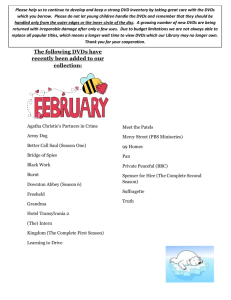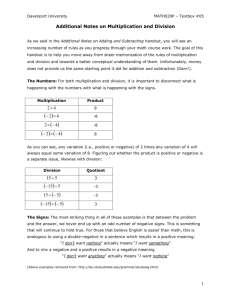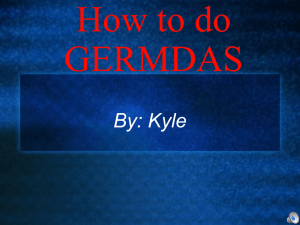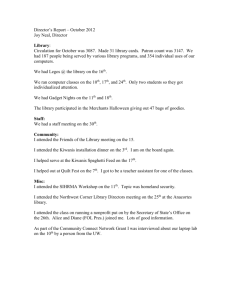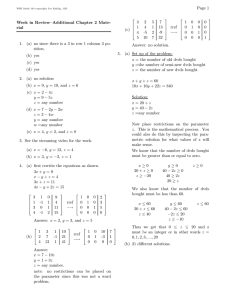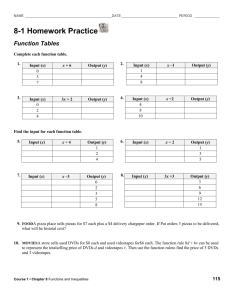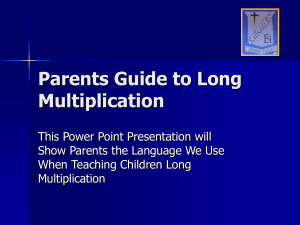Attacking word problems in 3rd and 4th grades
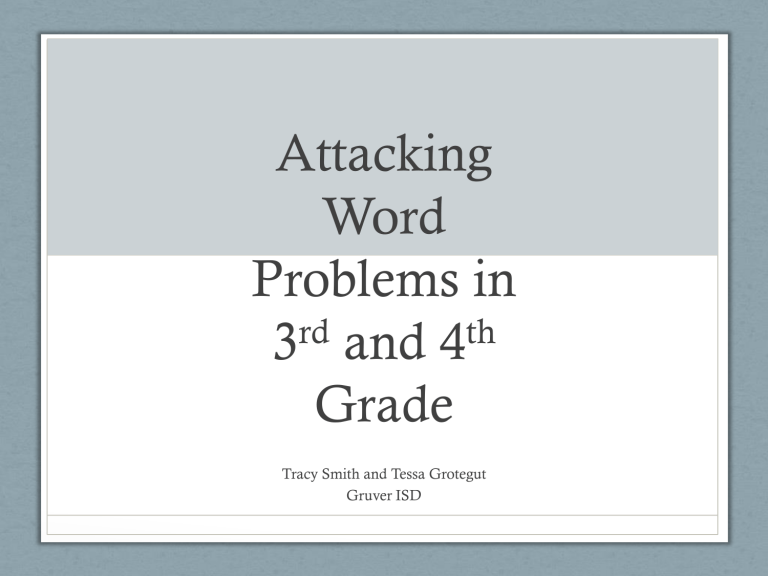
Attacking
Word
Problems in
3
rd
and 4
th
Grade
Tracy Smith and Tessa Grotegut
Gruver ISD
GET
PROBLEM-SOLVING
STRATEGY
What is this?
This is a strategy developed by another teacher to help the learner decide which operation to use. (x or ÷).
What do these letters mean?
• The “G” stands for
GROUPS, the “E” stands for EACH, and the “T” stands for TOTAL.
• First we have to compile a huge list of words that mean the same thing as
GROUPS….hint, anything you can draw and put something IN, would probably work as a group. This is very important for your learner to start recognizing GROUP words. Let’s list as many words that mean groups as we can….
• Next, we need to do the same thing with
EACH, only this is a lot easier really there are only THREE….yes, three.
EACH, PER and A You have to teach the student that not ALWAYS do these words mean each but a lot of the time they do so to pay close attention to them….I make my students write the word EACH on top of per or a and see if it makes sense and if so, it is an EACH word!
• Last, the word
TOTAL. Lots of addition words mean total so when a total word is PAIRED with an Each or
Groups word, it means to multiply or divide. Let’s list some total words…
• NOW that we know all the synonyms for groups, each and total, we have the hard part down. ANYTIME you see the word EACH
(per or a) in a word problem, you KNOW, and I stressssss to my kiddos, DO NOT ADD
OR SUBTRACT. You are either going to
MULTIPLY OR DIVIDE. I’m sure you are with me on this, for some reason they think they should add or subtract all numbers when looking at a large word problem…..NO!
OK…lets do a little practice
• James Electronics has 437
DVDs in 5 cases. Each case has an equal number of
DVDs. How many DVDs are in each case?
• OMG…what word do you see….EACH. REALLY emphasize this to your learners every time and they will stop the madness of adding and subtracting every time.
FIRST….look at your question and what the problem is asking for?
G x E = T
•
Now look for groups and total words and label them accordingly. How do we find the missing number in a multiplication problem….DIVIDE!!!
Henry flosses his teeth 2 times each day. How many times will he floss his teeth in a month that has 31 days?
G x E = T
• EACH!!!! Remind them either multiply or divide…
• Look at the question, label and lastly ask “ Does it make sense?”
Each binder has 65 pieces of paper. How many pieces of paper are in 31 binders in all?
G x E = T
There are 98 students in
Northtown Elementary
School. Each of the students took 4 exams this week.
How many exams did the students take in all?
G x E = T
After 7 pop quizzes, Nancy has scored a total of 614 points. If Nancy had the same score on each pop quiz, what was her score?
G x E = T
In all 880 people attended the
6 performances of the one-act play. Each performance was attended by an equal number of people. How many people attended each performance?
G x E = T
Other Problem Solving
Strategies
These are the steps that we teach our students to follow when working out a word problem.
Math Word Wall
• Addition words – RED
• Subtraction words – BLUE
• Multiplication words - GREEN
• Division words – PURPLE
• Other words – YELLOW
What Curriculum Do We Use?
Target Math
We do a problem of the day each day and on
Thursday we do TWO.
Then on Friday we give the students the same copy as a test. This helps them show us their knowledge of key words, get and pencil problem solving strategies!

